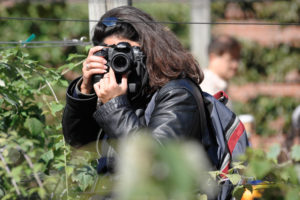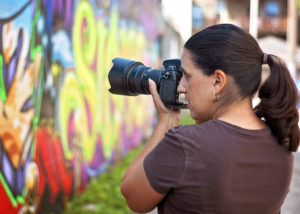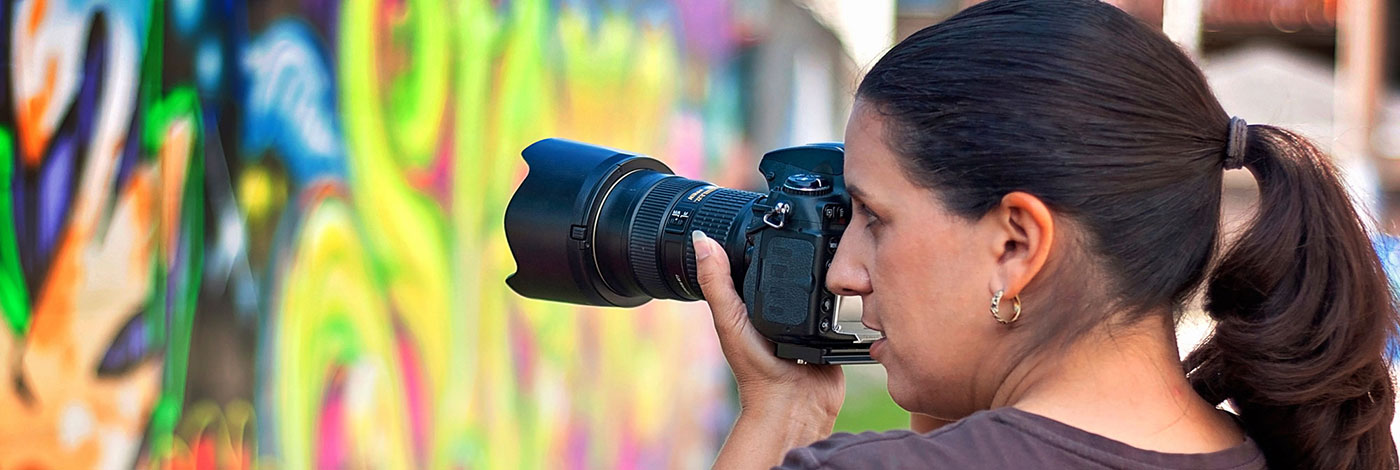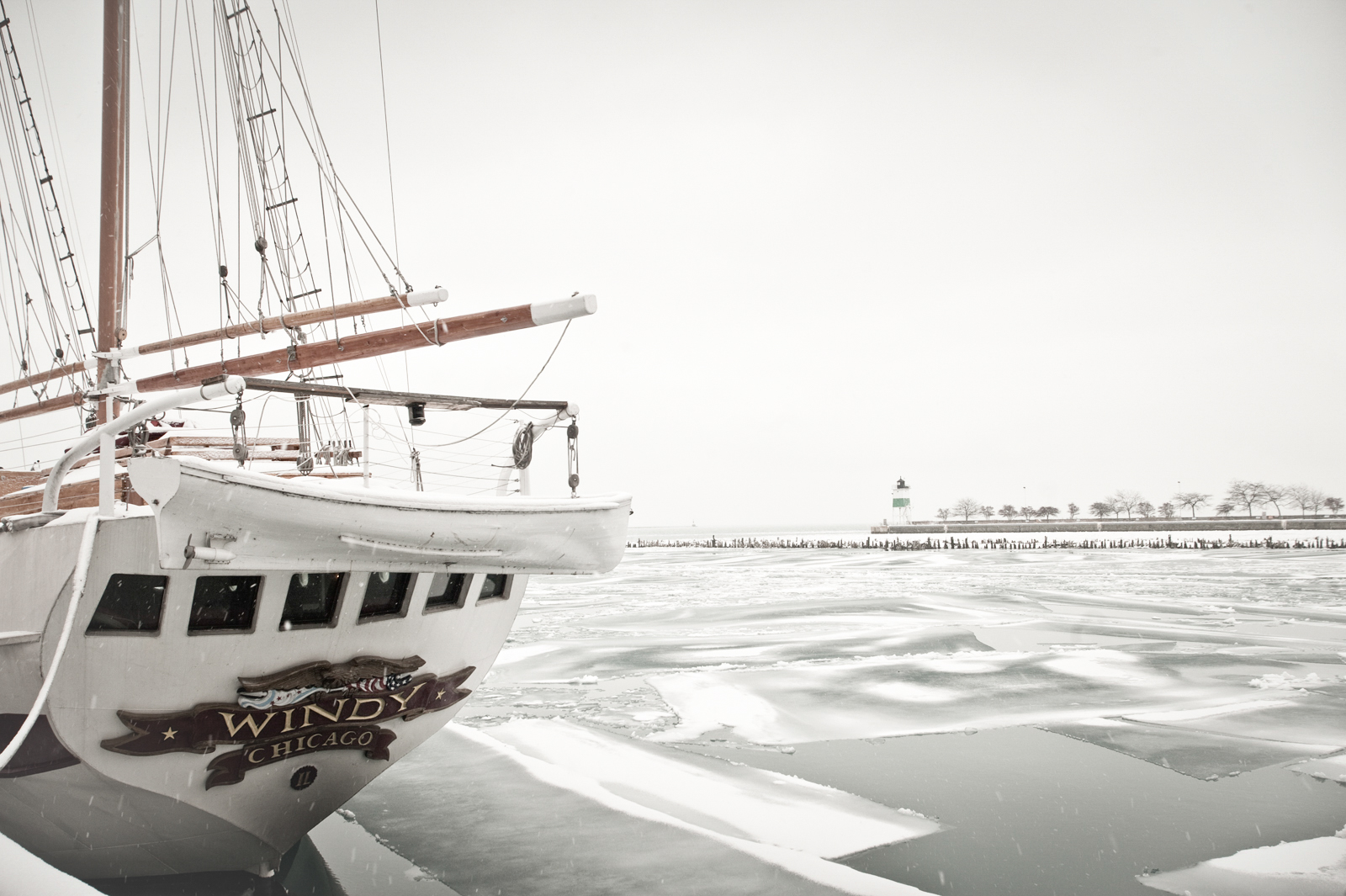Nearly all of my clients hear me use the phrase “Cradle your lens” when we’re out on a tour and, if they’re reading this, they’re probably laughing a little like we do when they hear me softly remind them. What does the phrase mean?
Well let’s start by assessing how you currently hold your camera when taking photos. Are your fingers on top or underneath your lens? Or do you hold it with both hands like a steering wheel? Does it really matter? Did you know there is a “right way”, or maybe better to call it a “proper way”, to hold your camera and lens? In this article, I’ll paint pictures (pun intended) of the three reasons you want to retrain yourself to hold your camera and lens properly.
Reason #1

The most obvious and discussed reason for holding your camera and lens properly:
Scenario
You’ve come to Chicago to capture architecture and waterfront scenes. You’ve found your scene and stand casually with knee bent, holding your camera up, elbows out, hand telescopically on lens. Maybe maybe you’ve got your dSLR up to your eye ready to click the shutter, or maybe you’ve got a mirrorless camera and have made it a habit to use the LCD screen instead of the viewfinder, when a gust of wind comes or traffic vibrates the bridge. You think you’re steady…but your photo proves otherwise.
Reason number one for cradling your camera and lens is for added stability.
Reason #2
Somewhat less talked about and definitely thought about:
Scenario #1
So you’ve come to Chicago sporting the new dSLR you received for Christmas. You’ve got the strap on, whether sling or the original neck strap advertising the exact camera brand and model you’re carrying, and you’re ready to go explore this amazing city! You’ve just left the hotel and stopped at the Tribune Tower to capture the fragments in the building’s facade or the sunlight on the Wrigley Building across the street. With camera out at elbow’s length, one hand holding the grip, the other wrapped around the lens with fingers on top, you’re in your zone and ready to take a photo. Someone whizzes past you reaching hands up in between you and your camera ripping it from your neck…or slices your strap and your camera easily slips into his/her hands.
Disclaimer: In this scenario, Tribune Tower and Wrigley Building are used only for purposes of an example of iconic buildings in Chicago, not for any greater probability of theft.
Scenario #2
Same wannabe thief, only this time, you’re elbows are close to your body, camera solidly grounded in the palm of your hand with fingers cradling the body and lens from underneath. Same person tries to grab your camera or slice your strap. Do you think he’s less or more likely to gain possession of your gear if you’ve got it nestled into your palm rather than mid air telescope?
Reason number two for cradling your camera and lens is for added security.
Reason #3
The least considered reason for properly holding your camera and lens:
Scenario #1
You’re standing in front of “The Bean”, looking through your viewfinder, arms up, hand cupping lens like a telescope, to capture the hundreds of people swarming the silver bean like bees in a beehive, when someone does a dance so their friend can capture their twirl and the reflection of their twirl in The Bean. Ha ha! Fun! Only, mid-twirl, their arm swings your direction batting your camera toward the ground. Your hand was firmly gripping the lens so you’re good, right? Except the force of the arm’s contact caused your lens to break off your camera body because only your fingers were holding the lens. Best case scenario it’s fine or, if it didn’t damage the contact points on the camera body, you may just need a lens repair.
Scenario #2
Same situation only now your hand is cradling your camera and lens from underneath. When dancing arm and camera connect, your entire camera is linked by your hand and gets pressed into your hand. Yes, it may have sustained an impact but it’s not broken off and everything is intact.
Reason number three for holding your camera and lens properly is for added safety.
Bottom Line
So what is this “proper way” to hold the camera and lens? If you’ve paid attention to the scenarios, you’ve got some idea. If you have your camera nearby, go ahead and pick it up. With one hand on the body grip, take you other hand and come from underneath the camera and lens. Rest the body on the palm of your hand, near your wrist, then simply “cradle” your lens underneath with your fingers, thumb will be on or near the top. Of course, the smaller the lens, the more difficult it may be but continue to use this position as best you can. Notice the difference? Not just in the hands on the camera, but did you notice it brought your elbows in closer to your body – your core? Stabilizing your core – feet solid, knees straight, shoulders down and back, elbows down and close to your body – will increase your chances of sharper photos, longer ability to handhold and less strain on your back and hips.

“It’s awkward!” Yes, if you’ve not been holding your camera this way, it will feel physically awkward…for a short while. Once your “cradling” hand becomes accustomed to carrying the majority of the camera’s weight, it will become second nature.
Moral of the Story
We all develop habits, good and bad, but breaking the bad habit and creating a better habit, in this case, could save you a lot of money and heartbreak. So the next time you pick up your camera and go out, regardless of where or what type of photos you’re doing, hear me saying to you, “Cradle your lens”.
See What’s Coming Up with our affiliate sponsor, CreativeLive
(Affiliate Disclaimer: If any purchases are made using this link, I will be compensated for promoting CreativeLive products)


Comments are closed.